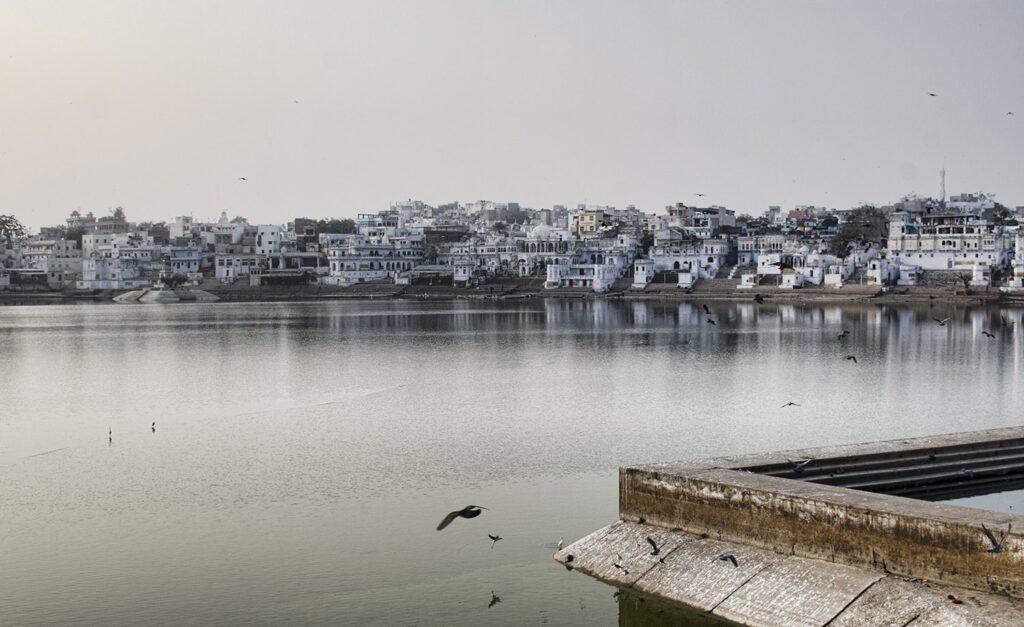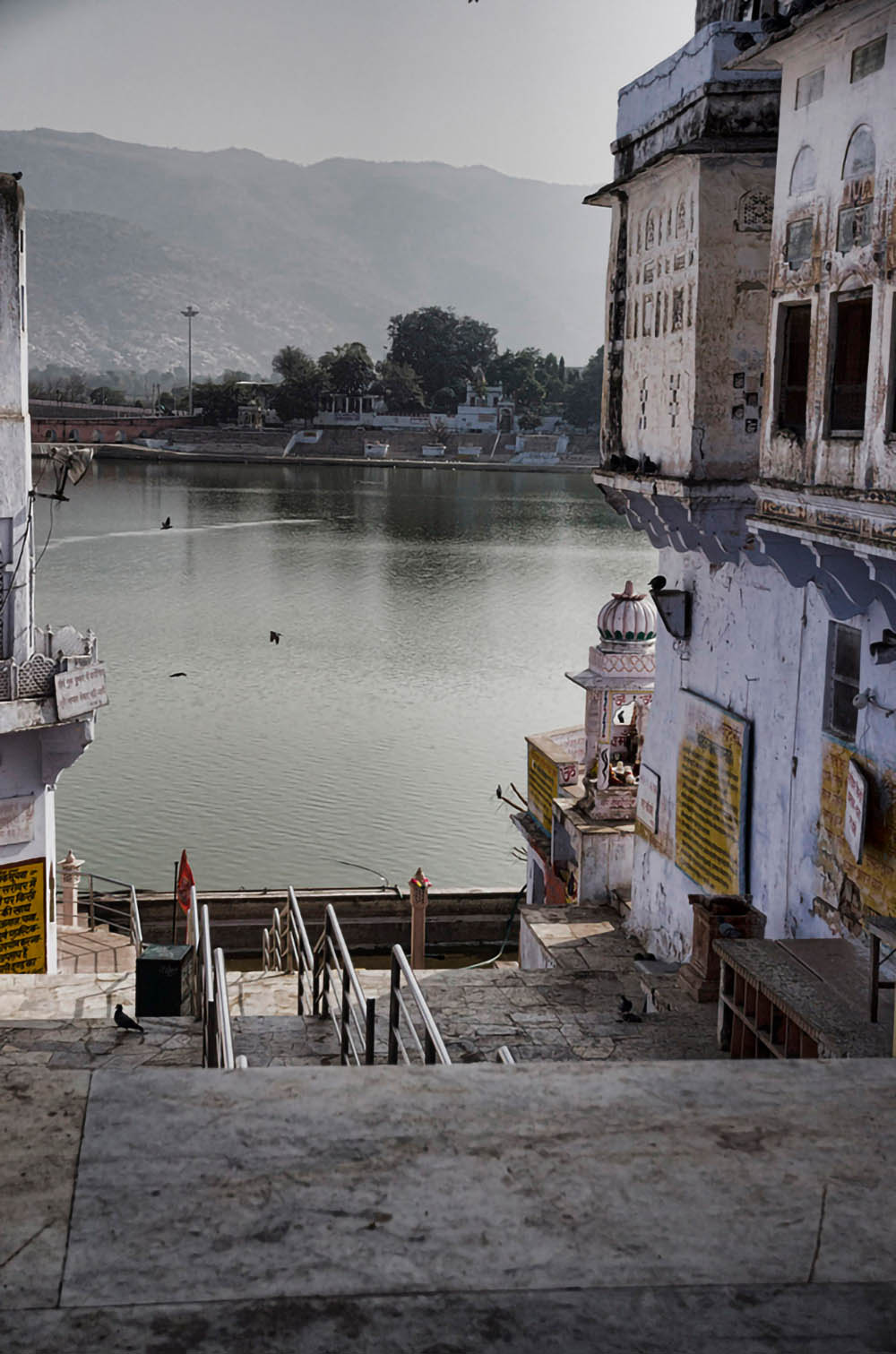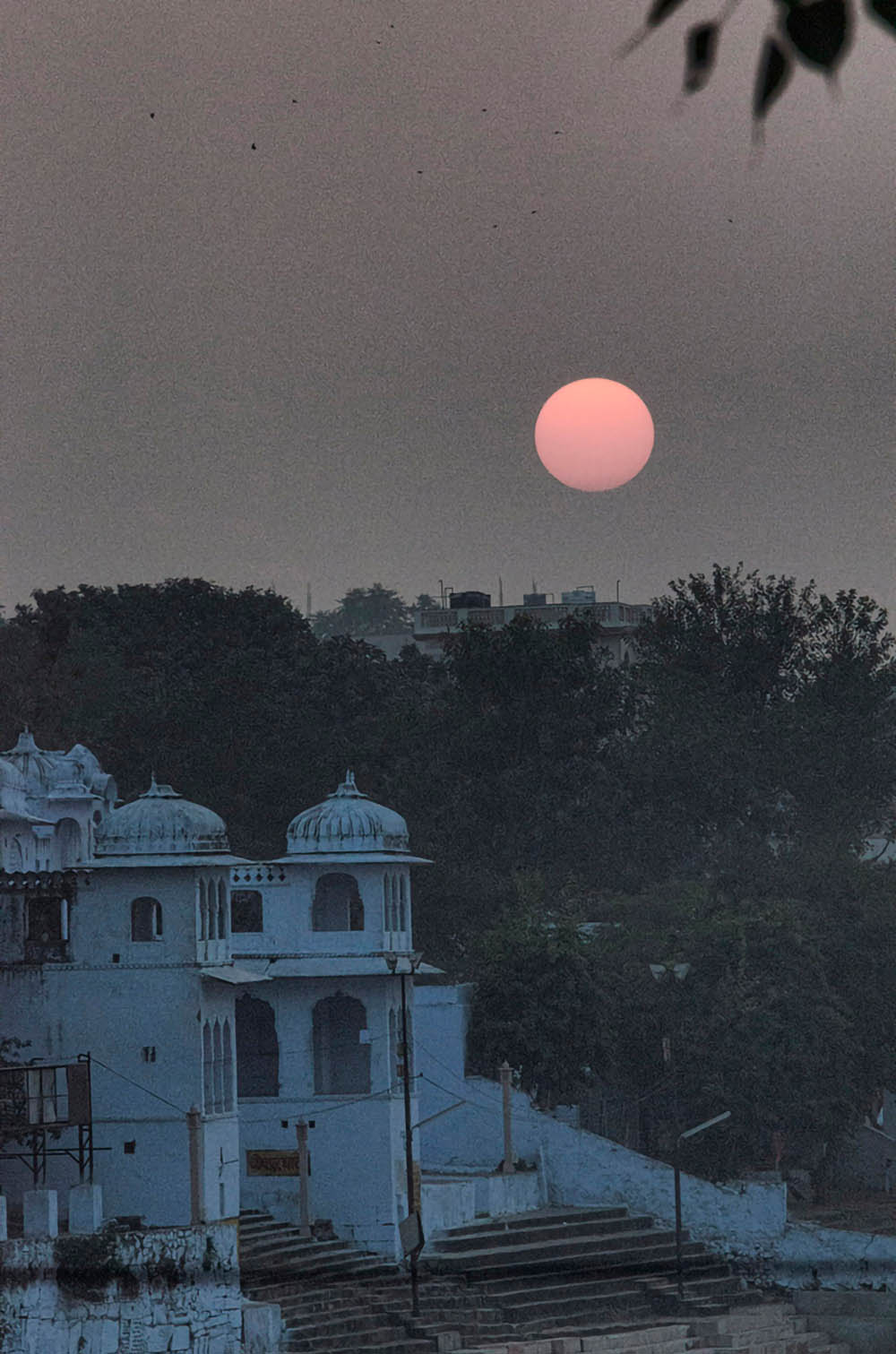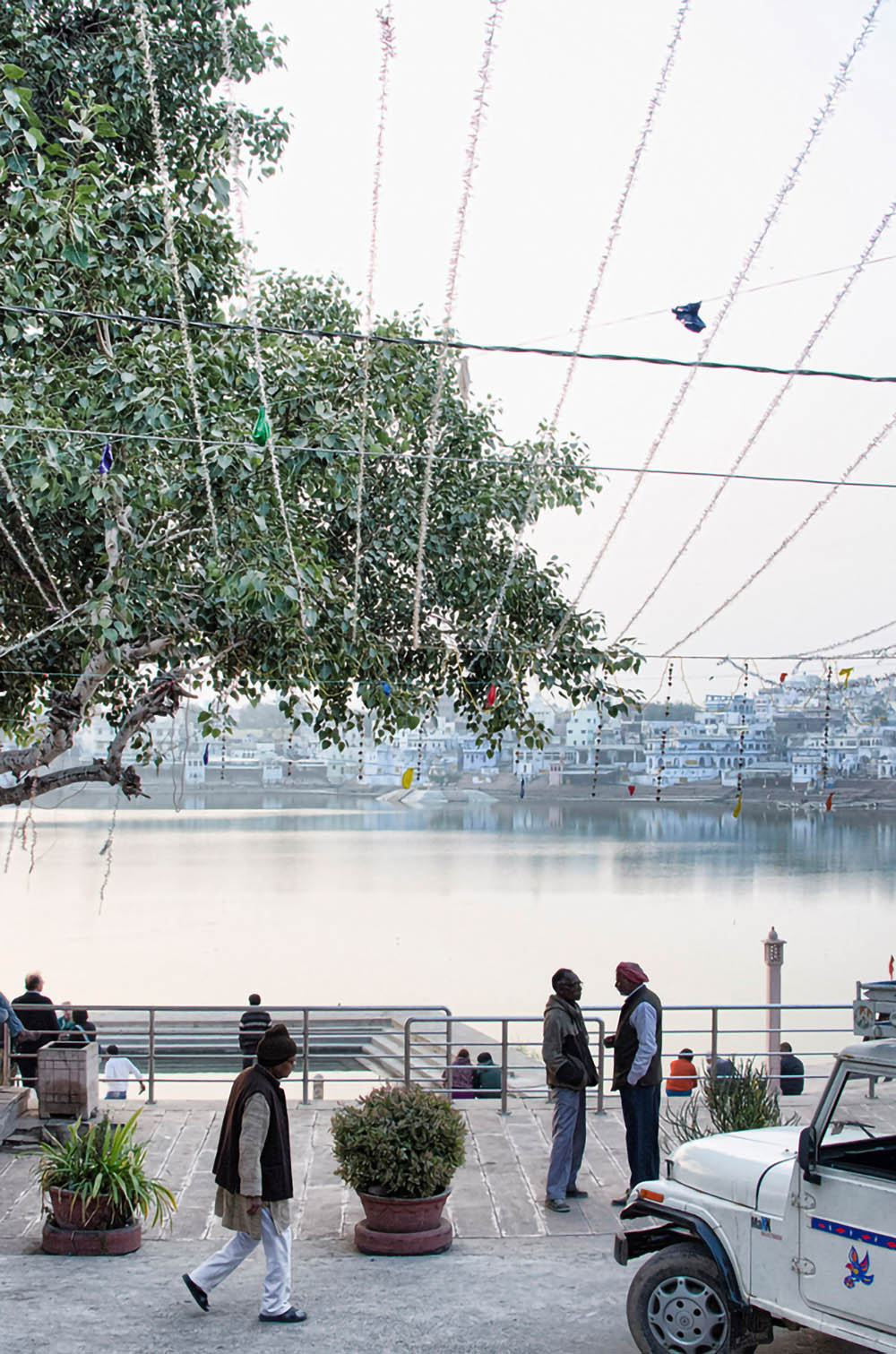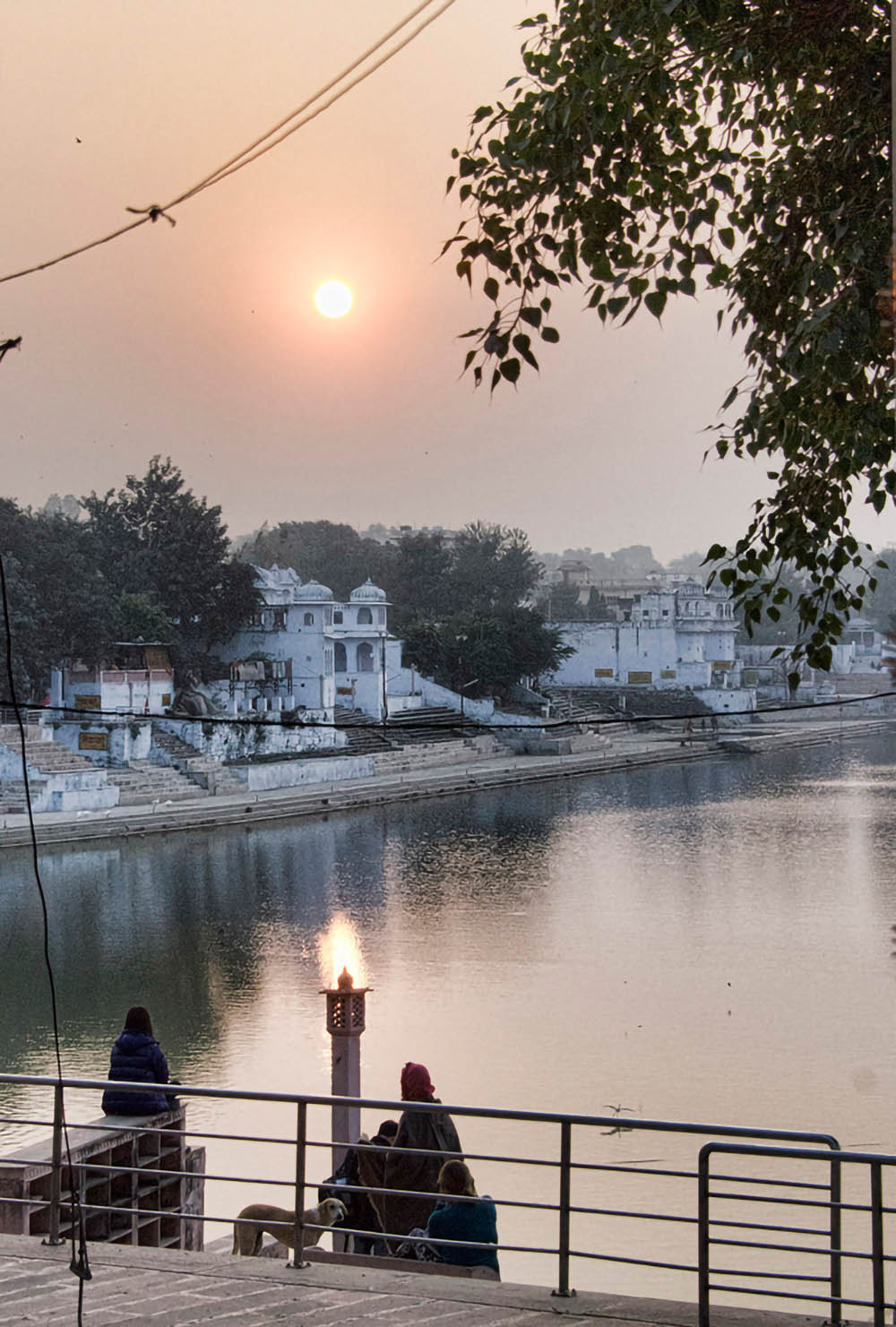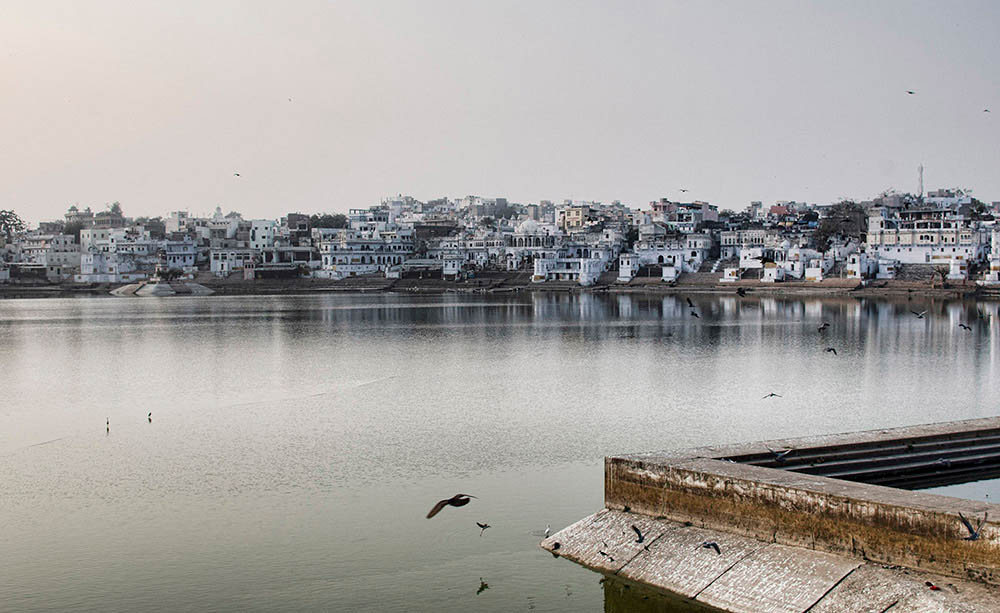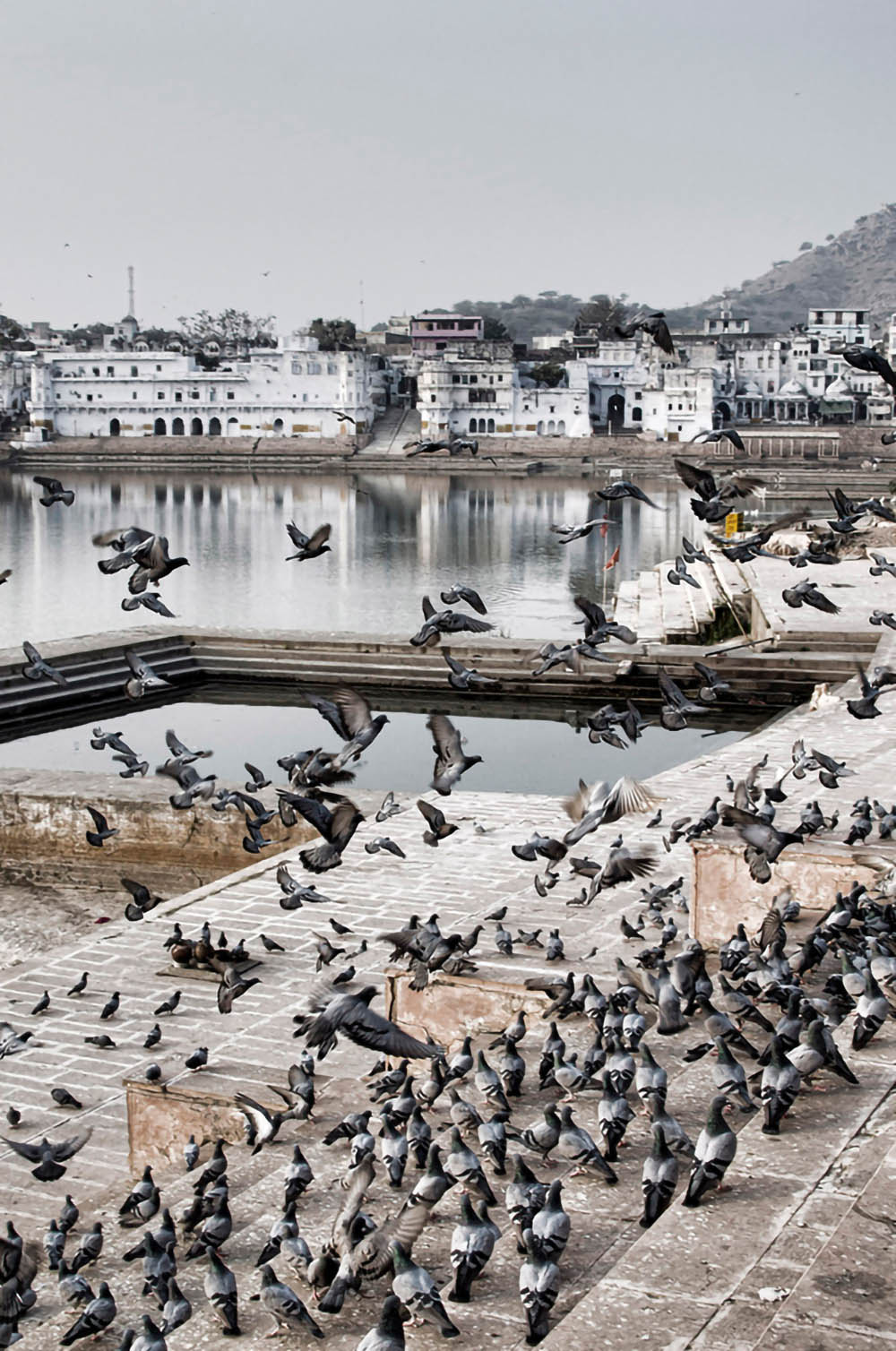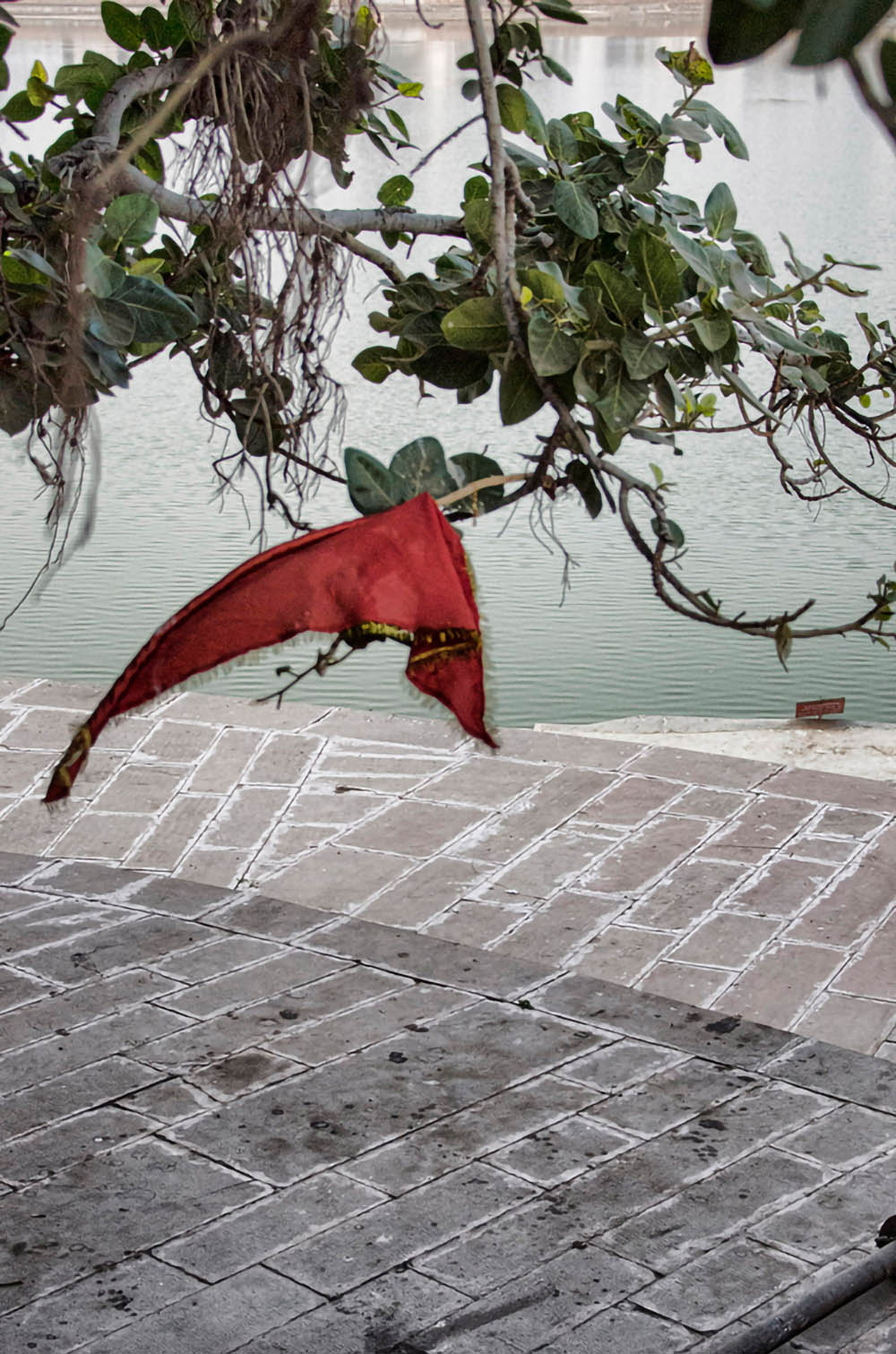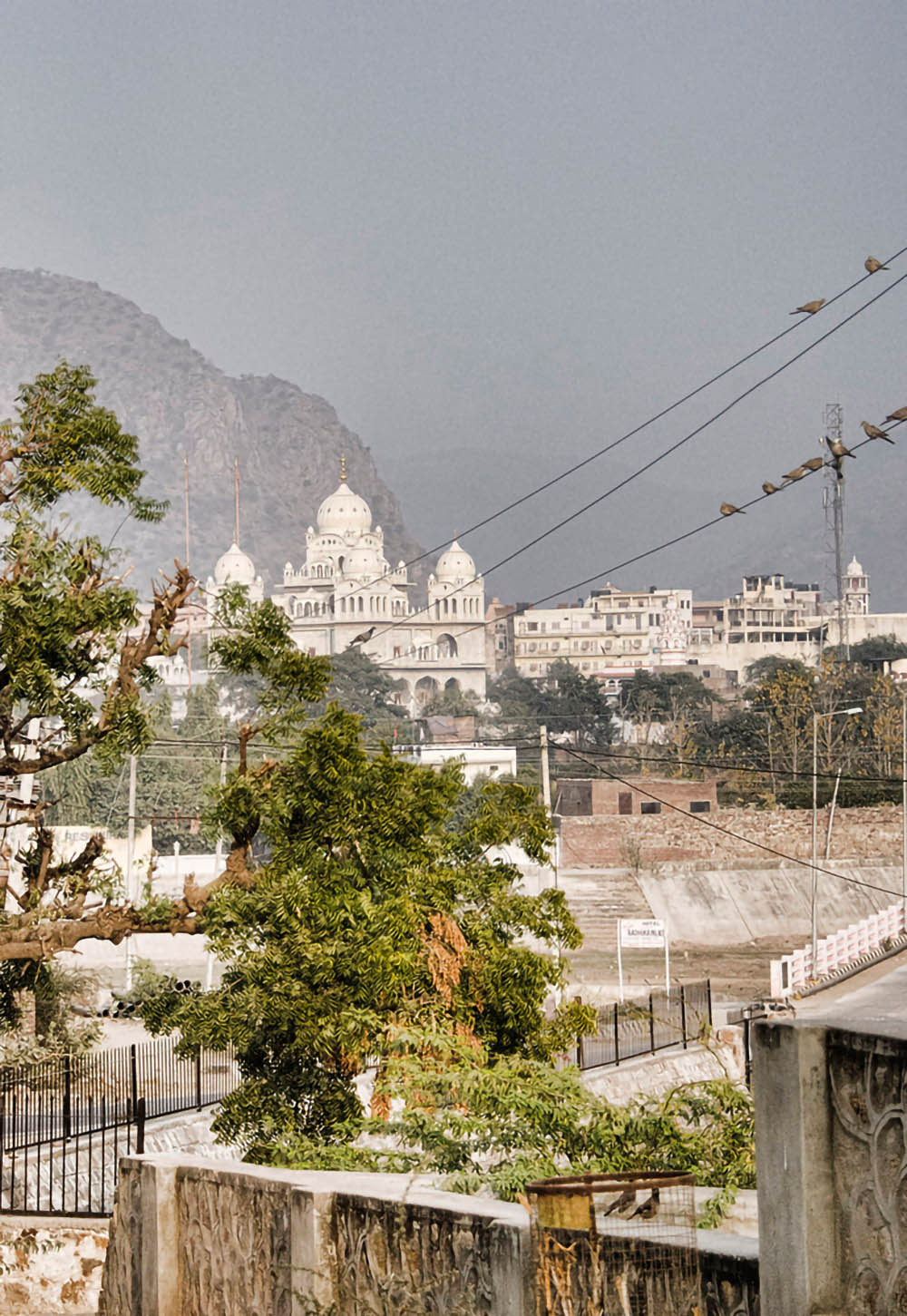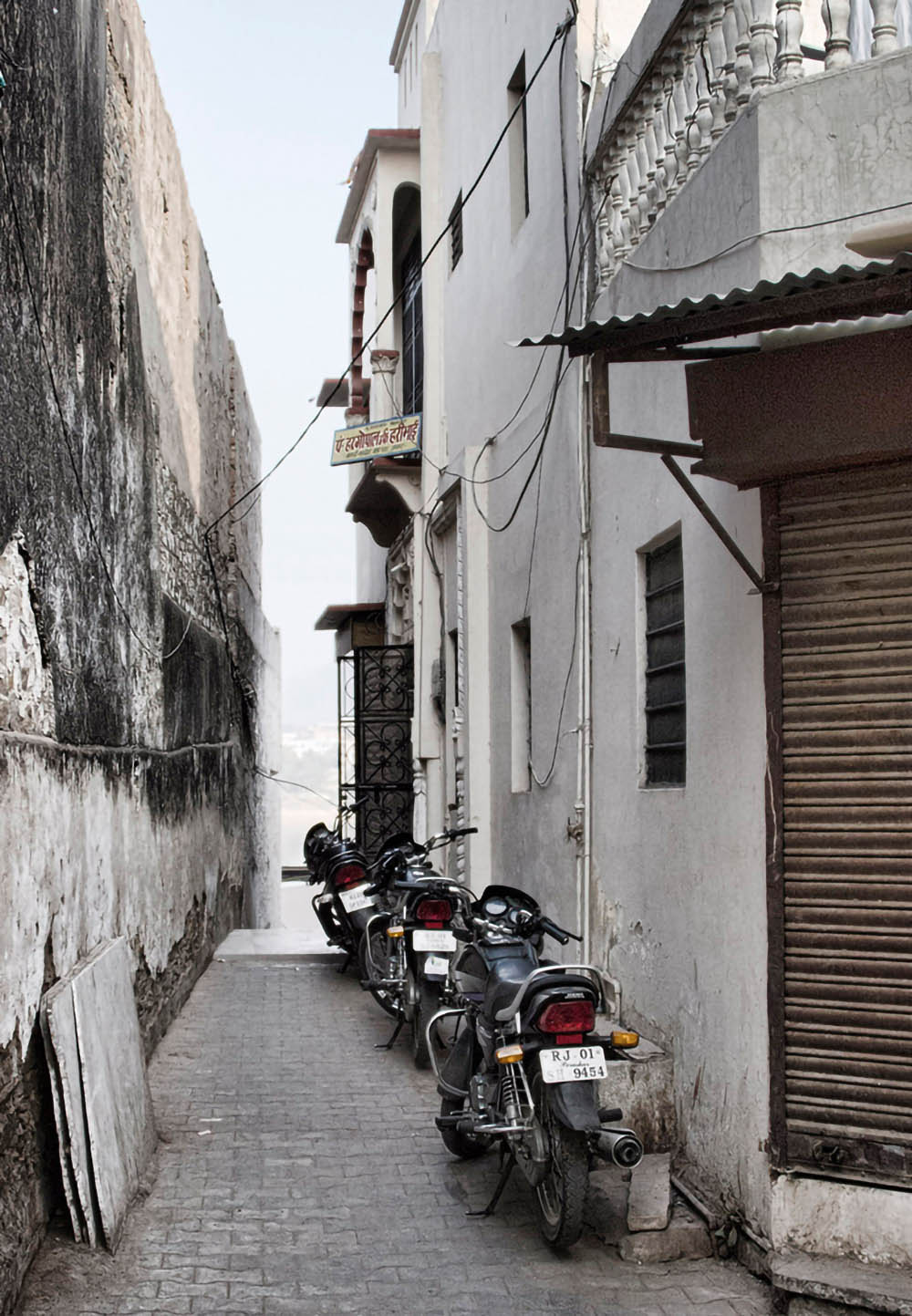Pushkar is one of the oldest existing cities in India, lying along the shore of the sacred Pushkar Lake. Its exact origins are unknown, but legend attributes its creation to Lord Brahma. Fittingly, Pushkar is home to the only Brahma temple in India—one of the city’s main attractions. Unfortunately, as with most temples, photography inside is prohibited. For that reason, I chose not to visit the temple at al
According to Hindu theology, Pushkar Lake has an unusual link to another sacred site across the border. The pond at the Katas Raj temple in Chakwal District, Pakistan, is said to share its origin with Pushkar. The story goes that when Sati, the wife of Lord Shiva, died, Shiva wept so intensely that his tears created two holy ponds: one at Pushkar in Ajmer and the other at Ketaksha (literally “raining eyes” in Sanskrit), from which the name “Katas” is derived. Pushkar is often called Tirth Raj—the king of pilgrimage sites—and today draws visitors from all over the world.
We arrived in Pushkar by bus from Ajmer, then continued by private vehicle to our hotel on the outskirts of town. The Tour Leader proudly informed us that the hotel had a swimming pool. In January. Needless to say, the pool was empty.
Pushkar is a compact place—you can walk almost anywhere, and the lake is always at its heart. One important rule: if you come within 30 feet of the lake’s edge, you must remove your shoes, as it is considered a holy site. Around the lake, you quickly learn to expect the push of commerce. Vendors, “chapati ladies,” and their children try to sell trinkets or food. Others—some genuinely holy, some not—approach you with offers to guide you through Hindu rituals at the lake. Two of our travel mates participated and genuinely enjoyed the experience, though I preferred to watch from a distance.
Despite the constant touts, most people in Pushkar are friendly enough. For me, one full day circling the town and the lake was sufficient. But Dylan, I think, would disagree.

